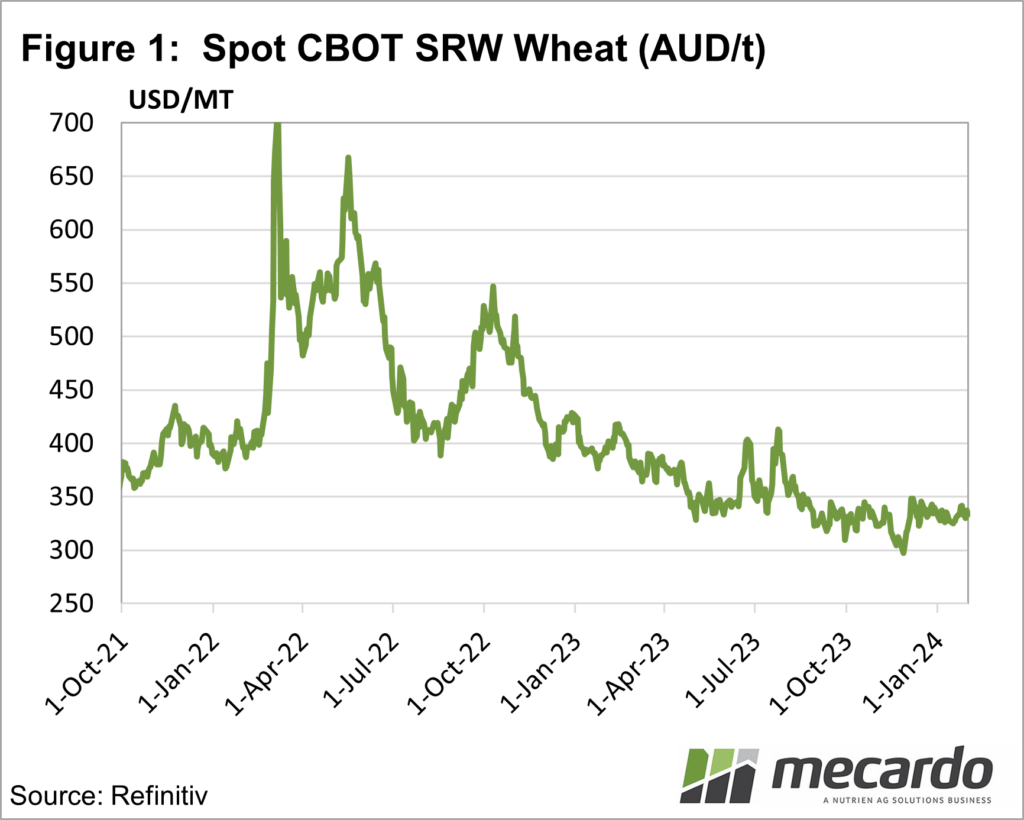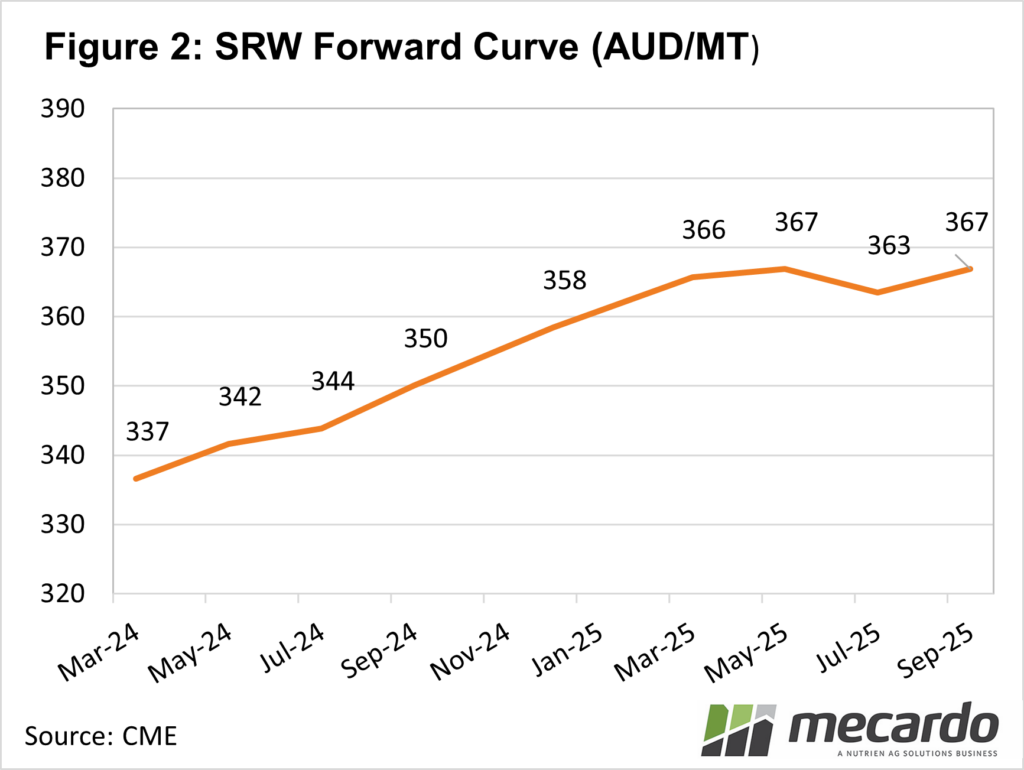February is traditionally when the hedging window for winter crops is said to be open. The ‘window’ opens at this time of year as it’s a risky time for northern hemisphere winter crops, and prices generally carry a risk premium which comes out as crops reach maturity.
Winter wheat crops in
the northern hemisphere start to come out of dormancy in February as snow melts
and crops are again exposed to the elements.
There are plenty of risks to crops at this stage, as cold snaps can kill
crops, or a lack of moisture can impact expected yields.
Figure 1 shows the
market is reasonably comfortable with how crops are coming along in the
northern hemisphere. Chicago Soft Red Wheat (SRW) Futures have tracked along
sideways since the middle of December with little volatility.
At around this time
last year, we saw a couple of solid rallies which added $20-40/tonne to prices,
before the risk was averted and prices returned to their previous level. These sorts of rallies are common at this
time of year, which is why it is a good time to look at pricing the new crop.
Rallies which occur as
the northern hemisphere harvest approaches are the ones we don’t usually like
to price into. Dry weather impacting
crops at that time of year tends to continue, and prices continue to rise.
Figure 2 shows the
forward curve for Chicago SRW. December
24 in our terms is priced at $358/tonne, while the curve flattens out moving
into 2025, with a small premium for the 2025-26 crop.
Northern hemisphere
corn and oilseed crops are generally sown in the spring, and again it can be a
time of price volatility as weather conditions impact planting intentions and
crop germination.
Canola prices can
often rally on weather concerns at this time of year, and this can provide
hedging opportunities. With soybeans in
the US, and canola in Canada not harvested until later in the year, the hedging
window is longer for oilseeds.
Figure 3 shows MATIF
Rapeseed futures are priced relatively flat out to the end of 2025, but there
could be opportunities for hedging above $750/t with some fickle planting
weather in the US, Canada, or Europe.
What does it mean?
After the very strong prices of the last few years, current forward markets are not that exciting for growers. Those looking to hedge should be thinking about what price they would look to start a hedging program, so selling can start on any weather-induced short-term price spikes.
Have any questions or comments?
Key Points
- Northern hemisphere winter crops are coming out of dormancy, which can lead to price volatility.
- Current prices are not exciting for growers, but there could be price spikes over the coming months.
- Growers should be thinking about what price they need to start hedging.
Click on figure to expand
Click on figure to expand
Data sources: CME, MATIF, Mecardo














